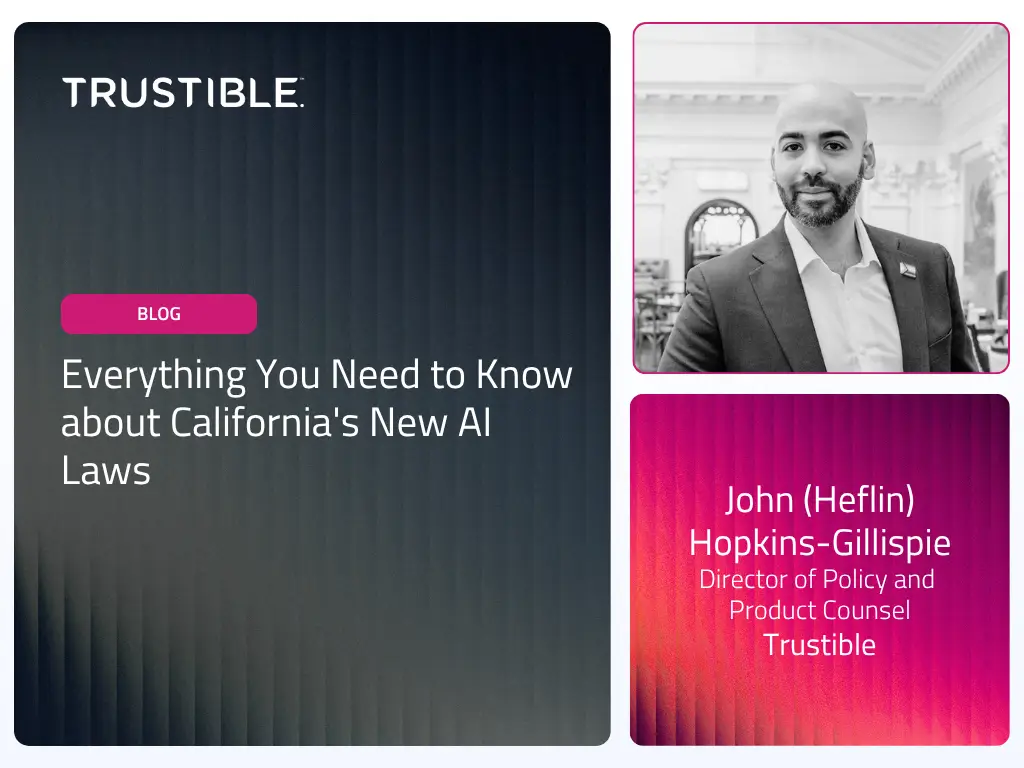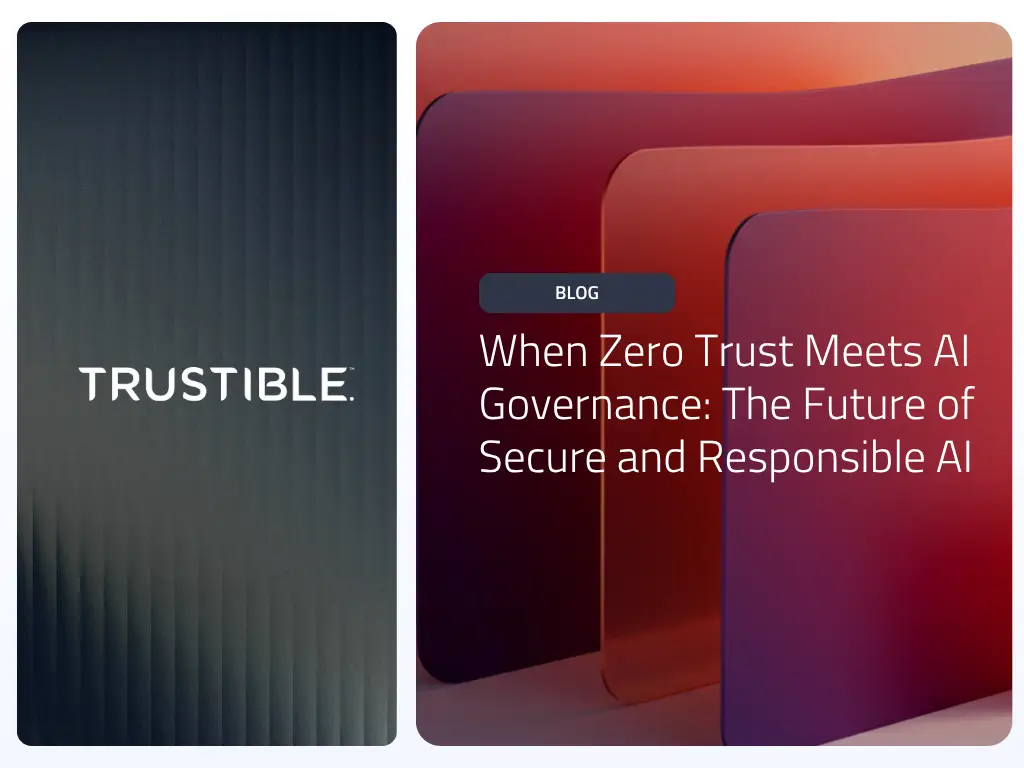As enterprises race to deploy AI across critical operations, especially in highly-regulated sectors like finance, healthcare, telecom, and manufacturing, they face a double-edged sword. AI promises unprecedented efficiency and insights, but it also introduces complex risks and uncertainties. Nearly 59% of large enterprises are already working with AI and planning to increase investment, yet only about 42% have actually deployed AI at scale. At the same time, incidents of AI failures and misuse are mounting; the Stanford AI Index noted a 26-fold increase in AI incidents since 2012, with over 140 AI-related lawsuits already pending in U.S. courts. These statistics underscore a growing reality: while AI’s presence in the enterprise is accelerating, so too are the risks and scrutiny around its use.
This is particularly true in regulated industries, where a faulty AI model can lead to regulatory penalties, reputational damage, or even life-and-death consequences. That’s why Trustible, a leading AI governance platform, and Armilla, a pioneer of affirmative AI insurance, have formed a strategic partnership to help organizations tackle these challenges head-on. Together, we are delivering end-to-end AI risk management, from proactive oversight to financial risk transfer.
AI’s Rapid Rise – And the High Stakes for Regulated Industries
AI adoption in the enterprise has reached an inflection point. Systems powered by Machine learning, generative, and agentic AI systems are now driving decisions in loan approvals, medical diagnoses, network operations, manufacturing quality control, and more. This wave of AI use is particularly pronounced in regulated industries.
Banks are deploying AI for fraud detection and credit scoring, hospitals use it for imaging analysis, telecom providers for customer service chatbots, and manufacturers for predictive maintenance. The potential upside is huge, but so is the complexity of managing risk. More than 60% of S&P 500 companies now flag AI-related risks as material factors in their annual filings, reflecting how boards and executives are waking up to these high stakes.
The biggest challenge is that AI doesn’t fail like traditional software. An algorithm might produce a biased result or a chatbot might “hallucinate” false information without any obvious bug to fix. A minor glitch in a generative AI tool could lead to a bank inadvertently denying loans to a protected group, or a healthcare AI missing a critical diagnosis – scenarios that carry legal and ethical ramifications.
Government oversight is also ramping up: the EU AI Act, the U.S. NIST AI Risk Management Framework, Canadian regulations, FDA guidelines for AI/ML in medical devices, and sector-specific regulations are all raising the bar for compliance. Deploying AI in 2025 means navigating a minefield of rules and expectations, and the cost of missteps can be enormous.
The Governance Gap: AI Adoption Outpacing Oversight
One stark reality is that enterprise risk and compliance processes haven’t kept pace with the explosion of AI use. Only 35% of companies have established an AI governance process, and a mere 8% of business leaders feel fully prepared to manage AI-related risks. This governance gap means that in many firms, AI systems are being developed or deployed without consistent standards for ethics, quality, and compliance.
Effective AI governance includes tracking all AI models in use, ensuring they’re trained on appropriate data, monitoring for bias or drift, validating outputs for accuracy, aligning with regulations, and preparing for audits or incidents. Doing this manually or with ad-hoc tools quickly becomes untenable. Even among companies actively using AI, fewer than half are taking key steps like bias mitigation, data provenance tracking, or AI explainability measures.
This is where Trustible comes in. Trustible’s AI governance platform provides a structured way for cross-functional teams (from data science to compliance to legal) to inventory and monitor AI systems, map them to relevant laws and standards, and automate governance workflows. By centralizing policies and tracking compliance evidence, Trustible helps organizations prove that their AI is responsible and audit-ready by design. Ultimately, robust governance reduces the likelihood of AI failures and can catch issues early – turning AI from a risk into a managed asset.
But even with the best governance, zero risk is impossible. AI is probabilistic, meaning even a well-governed model can err unpredictably. That’s why organizations also need a safety net. Enter Armilla’s specialty: insurance.
Why Traditional Insurance Falls Short for AI Risks
When an AI system fails or causes harm, who pays for the damage? Today, many enterprises assume their existing insurance (cybersecurity policies, or Errors & Omissions coverage) will cover AI-related incidents. This is a dangerous assumption.
Most standard insurance policies are silent on AI risks and weren’t designed for the unique nature of AI. Cyber insurance focuses on breaches and hacking – external threats – and usually does not cover internal AI glitches like an algorithm that gives faulty results or a chatbot that leaks sensitive data. Similarly, E&O insurance might cover a software bug, but AI’s behavior can be deemed an “inherent defect” or non-negligent error, muddying the coverage. Many policies also have exclusions if the AI model is developed in-house or if performance benchmarks weren’t explicitly agreed upon.
This is the gap Armilla was created to fill. Armilla designs insurance coverage specifically around AI failures, errors, and liabilities that other policies overlook. Its underwriting approach looks at an AI model’s reliability, the organizational governance practices in place, and the potential impact of its failures. The result is affirmative AI liability insurance – coverage that explicitly addresses scenarios such as an AI’s incorrect prediction causing financial loss, a generative model producing IP infringement or libel, or regulatory fines stemming from AI non-compliance.
By having the right insurance, companies can transfer the financial risk of AI mishaps – essentially getting a backstop for when even well-governed AI systems go off track.
How Trustible and Armilla Power End-to-End Risk Mitigation
No single solution is enough for AI risk. What enterprises need is a holistic approach that covers both “left of boom” (preventing and mitigating AI issues proactively through governance) and “right of boom” (providing recourse and resilience when incidents happen through insurance.)
Together, Trustible’s AI governance platform and Armilla’s AI insurance create a feedback loop of risk management that spans the entire AI lifecycle. Governance reduces the chance of failures and generates data on AI performance, while insurance provides a financial safety net for residual risks. Importantly, good governance becomes a competitive advantage in getting better insurance, just as safe driving lowers car insurance premiums.
For enterprise customers, the value proposition is clear: end-to-end AI risk management under one coordinated framework. Instead of piecemeal tools or half-measures, they get a one-stop approach: govern and insure your AI systems under one roof.
Real-World Impact: What This Means for Enterprises
- Financial Services: A bank rolling out AI loan underwriting can use Trustible to validate compliance and bias checks, while Armilla insures against regulatory fines or lawsuits if errors still occur.
- Tech & Telecom: A telecom using AI chatbots can enforce guardrails via Trustible and be insured through Armilla if the chatbot generates defamatory or harmful content.
- Healthcare: A hospital deploying an AI diagnostic tool can document FDA compliance via Trustible and rely on Armilla coverage if the AI misses a critical diagnosis.
- Manufacturing: A manufacturer using predictive maintenance AI can prevent many failures through governance and cover costly downtime through Armilla’s policies.
Across industries, the integration of governance and insurance transforms AI risk management from a roadblock into a strategic enabler.
A Vision for Responsible AI: Why a Unified Approach Matters
Trustible and Armilla believe integrated governance and insurance will become the gold standard for AI risk management, much like seatbelts and airbags in cars. Governance minimizes harm, and insurance provides a layer of protection when impact occurs.
The benefits are clear:
- Faster Innovation: With oversight and insurance, AI projects move faster because risk is managed.
- Trust and Transparency: Regulators and stakeholders gain confidence when enterprises can prove governance and demonstrate insurance-backed accountability.
Resilience: Governance and insurance together allow organizations to adapt to emerging risks and unknown unknowns.
In conclusion, the Trustible–Armilla partnership is emblematic of responsible AI enablement. Enterprises that embrace this unified approach can confidently harness AI’s transformative power, guided by strong governance and guarded by effective insurance. Responsible AI is not just about avoiding bad outcomes; it’s about unlocking AI’s full potential in a sustainable, trustworthy manner.
To learn more about the partnership, visit trustible.ai/armilla



